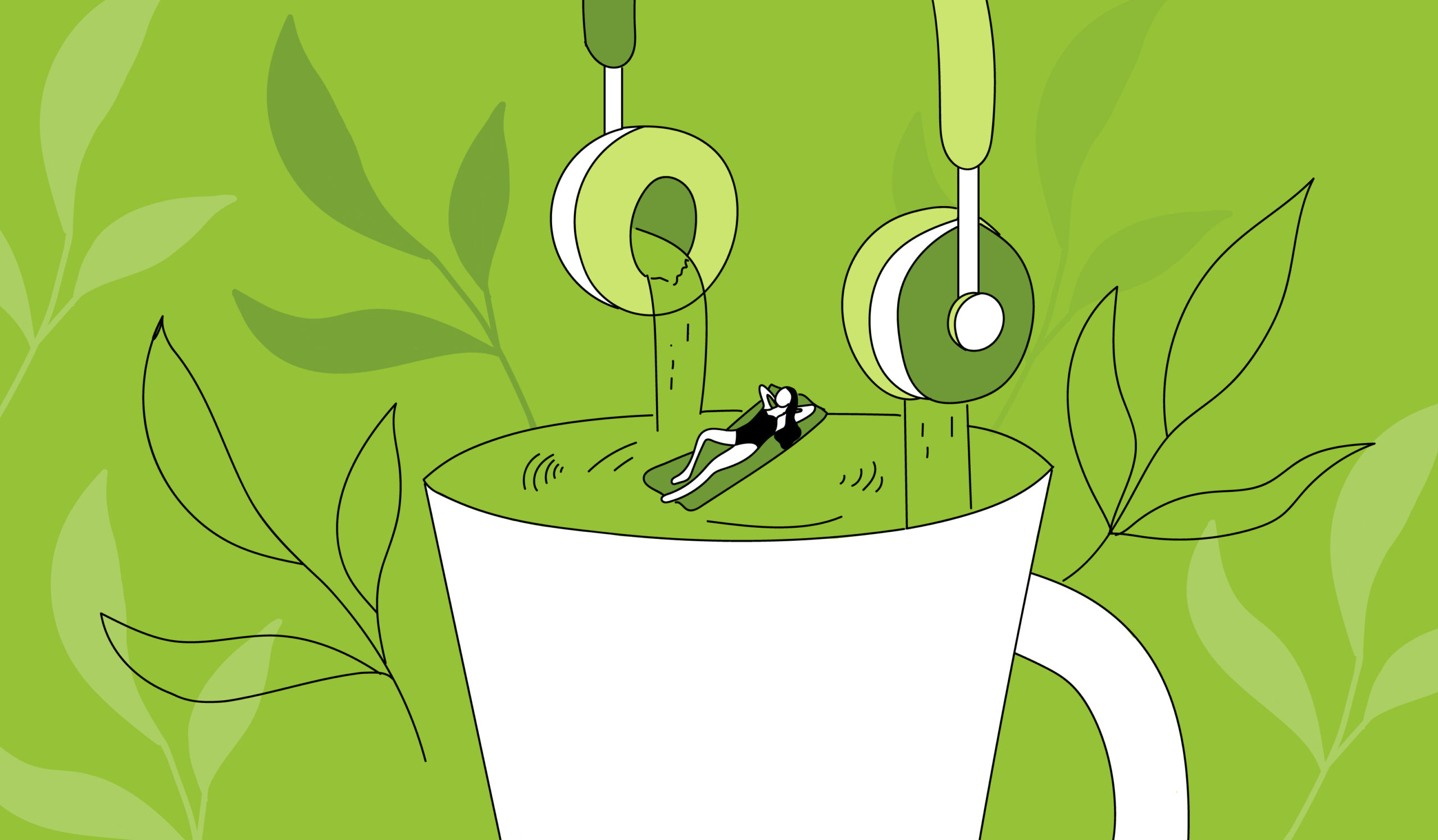
The ‘accidentally fabulous’ world of Maryanne Shearer
Sharing a cuppa with the world’s greatest tea lady
Tea time. Tea break. Morning tea. Afternoon tea. It’s code for ‘time-out’. It’s also what the world needs now, perhaps more than ever. Because as genius entrepreneur and retailer, Maryanne Shearer, knows better than most, there’s not much that can’t be fixed over a cuppa.
When Maryanne and her then–business partner, Jan O’Connor, opened their first T2 store in 1996, they didn’t know they would soon be living the ancient wisdom, ‘The path to heaven passes through a teapot.’
‘I like to say that T2 was accidentally fabulous,’ Maryanne says. ‘We started it because we loved retail, and we loved beautiful things. There was no big strategy or plan to change the world. It was just a bit of fun.’
That ‘bit of fun’ spawned a global success story, with the company sold to multinational behemoth, Unilever, in 2013 for a reported A$60 million. By the end of 2020, there were over eighty T2 stores across the globe.
Like so many success stories, it began with a flash of inspiration. An attempt to kickstart a homewares company had bombed after many months of planning. Maryanne and her partner were trying to work out their next step over a cup of tea in their hometown, Melbourne.
That’s when it struck them. In a city that prides itself on its coffee culture, nobody was doing tea. ‘I’ve always loved tea,’ Maryanne says. ‘I wasn’t mad about it, though. I certainly didn’t ever think I’d be known as “the tea lady!”’
‘At the start, I just knew English and Irish Breakfast teas. But once I began researching, I discovered how many thousands of beautiful blends exist around the world. That was it for me. I was on a journey of discovery.’
Aladdin’s cave
That journey of discovery inspired one of the world’s most remarkable retail experiences.
If you’ve been fortunate enough to walk through the door of one of T2’s premises, then you know what I’m talking about. Black walls and spotlights highlight gem-like glazed teapots and cups. Gilded canisters and tempting pots of freshly-brewed tasting teas stand on tiered displays. Hidden nooks and crannies reveal treasures tucked beside neat stacks of signature T2 tea boxes. It’s an Aladdin’s cave of wonders waiting to be discovered.
This, of course, is no accident. ‘Each store we opened,’ Maryanne explains, ‘we tried to customise it and create a theme that was unique. So even though the product, the training and the uniforms were the same, each store had a different feel.’
‘For example, I’ve always loved going to the markets in Istanbul,’ she says. ‘So we designed our Chapel Street store to be like the Grand Bazaar.’
This bespoke approach was an audacious move. But for Maryanne, it was a no-brainer. ‘My background is fashion design,’ she says. ‘And I love to make beautiful things. I always wanted to create a place where I could do what I love, and get paid for it.’
It began with a sense of spontaneity and fun. ‘We’d drive around factories buying teapots and cups then fill the shop without knowing whether we could get them again. That’s why at T2, there were teas and whacky pots everywhere. It was absolute mayhem.’ Maryanne smiles nostalgically. ‘Those early days were fun, though.’
Tea ceremony
For Maryanne, T2 wasn’t simply about flogging a hot beverage. It was a way of paying homage to an ancient and venerated tradition.
That tradition began in 2737 BC as the result of a serendipitous accident. The Chinese Emperor Shen Nung was sitting under a Camellia sinensis tree while his servant boiled drinking water. After some of the leaves from the tree fell into the pot, Shen Nung, who was a renowned herbalist, decided to have a taste. And so a legend was born.
Tea-drinking quickly took hold in China. Then sometime in the 3rd century AD, Japanese Buddhist monks travelling in China brought tea back to their homeland. By the 12th century, Zen monks were using ritual tea drinking to stay awake during long meditation sessions.
The Japanese developed their famed tea ceremony in the 15th century, with special rooms set aside within homes to drink tea and discuss the finer things in life: calligraphy, paintings, the art of flower arranging – ikebana – and even the relative merits of tea utensils.
The ritual spread across the globe. The Dutch encountered tea in the 17th century on the island of Java, and shipped the first consignment to Holland in 1606. By 1658, an ad appeared in a London newspaper touting the availability of the ‘China Drink, called by the Chinese, Tcha, by other Nations Tay alias Tee.’ After Charles II’s marriage to the Portuguese princess and tea addict, Catherine of Braganza, British high society couldn’t get enough of it.
Tea became synonymous with the British Empire. It even entered the vernacular of the First Australians. In the Kriol spoken by the Indigenous people of northern Australia, the word ‘kapati’ is used to describe a gentle way of addressing problems within families and communities. Often, this takes place quite literally over a ‘cup of tea,’ hence, ‘kapati.’
Nothing like Nanna’s
The key to T2’s success was that it was able to market this ancient tradition to a new generation of customers by skirting round the doily and tea cosy brigade.
‘Believe it or not, that was accidental,’ Maryanne says. ‘We opened our first place in Brunswick Street, Fitzroy, right near Melbourne Uni. And the most excited customers were the uni students.’
‘We realised we’d hit on something because they wanted to drink tea, but not the tea their nannas drank.’ The spark in Maryanne’s eyes reflects the magic that happened there. ‘So we knew there was huge youth market, and we branded and developed everything with them in mind.’
Those original customers are all well into their forties now. And they’re still drinking T2 tea. Might be that they’ve taken a leaf out of Fydor Dostoevsky’s book – it was he who penned the immortal line, ‘I say let the world go to hell, but I should always have my tea.’
Or it could be that in the 21st century, tea offers those same customers something more. Today, it’s seen as a fast-track to inner health and wellbeing.
Teas have been shown to boost the immune system, fight off inflammation, and with its high levels of antioxidants, tea is even believed to fend off cancer and heart disease.
Just some of the benefits Maryanne reels off for me? Chamomile tea reduces stress and improves sleep. Rooibos improves blood pressure and relieves allergies. Peppermint fights irritable bowel syndrome. Ginger relieves joint pain. Hibiscus improves liver health. Green tea reduces blood clotting. And oolong tea contains an amino acid that slows the progression of Parkinson’s and Alzheimer’s diseases.
It’s no wonder T2 was such a hit.
Believe
Those modest – and, Maryanne assures me, manic – beginnings gave birth to something extraordinary.
Looking back on it, she is philosophical. ‘Success in business is about belief and consistency,’ she explains. ‘You can be pedantic and perfect, or – like me – you can be crazy and chaotic. But as long as you’re passionate, and it comes from your heart, you create believers and followers.’
In 2012, Maryanne was awarded Veuve Clicquot’s Australian Businesswoman of the Year. Did she deserve it? And then some. Her insights, as one of the country’s most accomplished entrepreneurs, are a masterclass in how to brand and develop a successful business.
‘I think any great brand is about connection and engagement with your team, and with your customer,’ she says.
Maryanne relates an experience that embodies her retail philosophy. Brand strategist Simon Hammond was visiting T2’s Fitzroy store. ‘Simon walked into the shop and one of the guys working there had really long hair and was walking around with no shoes on.’ Maryanne says. ‘Simon asked him why he was wearing no shoes, and he replied, “Because I can.” This was the local culture. So when customers walked in, they felt comfortable.’
‘Brand is about making a connection with people who believe in the same things you do. So then everyone thinks, “I like that; I want to be part of that; I believe in that; I’m going for the ride.” It’s the same, whether you’re talking about clothing, or homewares, or tea.’
Maryanne’s greatest achievement was that she created demand for something that didn’t exist. That meant building the business off familiarity. ‘We were the classic 80/20 business,’ she says. ‘Twenty percent of the teas were responsible for eighty percent of the turnover. Most of our business was done in just twelve teas. But we needed the others, because it drew the customers in like bees to honey.’
‘It was enchanting for them to come into the stores. They would grab a chamomile or an English Breakfast; but then one or two of the unusual teas as well.’
Money managers
‘It was a fantastic joy ride for about ten years. We would go to work every day, merchandise at the store, do buying, taste tea all day … we just loved it.’
Then the business boomed, and everything changed. ‘We got bigger and bigger, and the money really started to roll in. Instead of doing tea tastings, I was sitting in board meetings all day.’
‘I was CEO of a business with a very high turnover and stores all over the world. And I wasn’t enjoying it.’
It was the beginning of the end for Maryanne. ‘My favourite moment is when a customer comes in, and you share what you’ve found. But the bigger T2 got, the less I experienced that.’
‘I lost touch with the stores and my team. I used to know everyone’s name. But by the end, I just called everyone darling, because I didn’t know anybody.’
‘In the end, I wasn’t doing what I loved. So I had to sell.’
Teabags
After Unilever acquired T2, the inevitable happened. ‘When you’re building a brand, it’s so much cheaper to roll out the same store in every location. It’s what McDonald’s do. And now, Unilever is pumping out T2 stores in China, putting them in containers, and rolling them out around the world. I was never going to be interested in doing that.’
As we speak, I’m struck by how deeply connected Maryanne is to T2, even now. That makes the daily reminders of how the brand’s prestige is being eroded all the more painful. ‘Now I see T2 sneaking into supermarket shelves,’ she says. ‘We used to have a “no supermarket” policy. We wanted to be a premium tea, and you can’t do that sitting in Coles.’
Worst of all are the teabags. If Maryanne Shearer were to have a bête noire, that would be it. ‘I never wanted to do a teabag,’ she says. ‘But our wholesale customers wanted them. So I found a machine in Japan that allowed us to use our loose-leaf tea in the bags.’
Maryanne sighs. ‘Now, they’re pumping out T2 teabags everywhere. And the reason teabags are generally awful is that the tea has to be ground down, so it infuses quickly. So supermarket teabags are basically just tea dust. It’s dry, stale, and flavourless.’
‘Teabags completely remove the ritual.’ For the woman who established T2 as a way to sell ceremony, that is the teabag’s greatest crime. ‘Making tea should be such a delight,’ she says.
The opportunity to ask the world’s greatest tea lady how to make the world’s greatest tea is too good to pass up. Her hints? ‘You’ve got to do it slowly, slowly. Respect the ceremony.’
‘First, you have to select a tea that matches your mood. Then you select your pot. It’s all part of the ritual,’ she says. ‘The perfect way to brew tea, technically, is to avoid over-brewing if it’s a green tea, or take it to one-hundred degrees if it’s a black tea or a fruit tea. You can spin the cup three times and the tea pot four times if you want. And you should rarely add milk.’
‘That said, my message has always been that you should just do it your own way.’
So what tea would Maryanne choose to accompany a relaxing afternoon on the couch with an audiobook? I prompt her with the famous C.S. Lewis quote: ‘You can never get a cup of tea large enough or a book long enough to suit me.’
‘Well,’ she says, ‘it always depends on so many things – what mood I’m in, what the weather’s like. Most days I drink White Rose, which is a white tea with a rose in it. That’s always been my go-to tea.’
Retail happiness
Maryanne is so passionate when she talks about her experience bringing T2 to life, I have to ask. Does she miss it? She answers without hesitation. ‘Every day.’
‘I miss the creativity. I miss my people. and I miss the beautiful culture that we had.’
And she’s always looking around for her next fix. ‘One thing I’ve learnt is that I’m a retailer,’ she says. ‘And I miss the retail world.’
As a ground-breaking entrepreneur and visionary, whatever she creates next will change the face of retail. ‘I think COVID has thrown us an amazing opportunity to revive and revitalise the way we approach retail,’ she says. ‘It can’t just be a $2 shop. It’s no longer about shit in a shop. It’s got to be about curating an experience in a beautiful space.’
While she plots and plans, Maryanne is exercising her creative skills taking ceramics classes. She’s also flexing her retail muscles at her partner’s legendary temple to bread, Ned’s Bake, in South Yarra.
But this certainly isn’t the last chapter in the Maryanne Shearer story. ‘I’m just looking for my next fix of retail happiness,’ she laughs. ‘We were in Morocco just before lockdown, and absolutely loved it. So I’m waiting until this all blows over, and then I’ll bring some product in from there to sell.’
Her eyes are sparkling. I can see the next big retail adventure taking form.
‘Hold on!’ she exclaims as I prepare to depart. ‘I’ve got it. The perfect tea to accompany an audiobook? A nice Darjeeling. It’s light. It’s bright. And it’s the perfect afternoon tea.’
Written by – https://meaghanwilsonanastasios.com/




